The digital landscape is evolving rapidly, and web design trends are constantly shifting to meet user expectations, technological advancements, and business needs. As we step into 2025, the focus on user experience, accessibility, interactivity, and performance will define the future of web design. Businesses that adopt these trends will not only stand out but also provide a seamless digital experience to their audience. In this article, we explore the top web design trends set to dominate in 2025.
1. AI-Driven Web Design & Personalization
Artificial Intelligence (AI) has already started transforming web design, and in 2025, it will play a crucial role in automating design processes, improving user experience, and offering hyper-personalized content. AI-powered tools will enable websites to adapt in real-time based on user behavior, preferences, and interactions.
- AI-Powered Chatbots & Virtual Assistants – Websites will integrate more intelligent, human-like AI chatbots for real-time customer support.
- Dynamic Personalization – Websites will customize content, colors, and layouts based on individual user preferences.
- Automated Web Design – AI-powered platforms will assist designers in generating layouts, optimizing images, and coding.
2. Voice Search Optimization & Voice UI
With the increasing use of voice assistants like Alexa, Google Assistant, and Siri, voice search optimization will be a game-changer in 2025. Websites will need to adapt to voice-based navigation and conversational search queries to enhance accessibility and usability.
- Conversational User Interfaces (CUI) – Websites will integrate voice-based interactions for hands-free navigation.
- Long-Tail Keywords for SEO – Content will be optimized for voice search by focusing on natural, conversational phrases.
- Minimalistic UI for Voice Navigation – Websites will have simpler designs to accommodate voice commands without overwhelming users.
3. Immersive Augmented Reality (AR) & Virtual Reality (VR) Experiences
Web design is no longer limited to static visuals; AR and VR technologies are making websites more interactive and engaging. In 2025, industries such as eCommerce, real estate, and tourism will leverage these technologies to create immersive web experiences.
- Virtual Try-Ons – Fashion and beauty brands will integrate AR-based virtual try-ons for customers.
- 3D Product Visualizations – eCommerce sites will use interactive 3D models to provide a realistic shopping experience.
- VR Showrooms & Tours – Real estate and hospitality businesses will adopt VR-driven site tours for an immersive preview of properties.
4. Dark Mode & Low-Light UI Preference
Dark mode is becoming increasingly popular, and in 2025, it will be a standard feature for modern web design. More websites will offer low-light viewing options to reduce eye strain and enhance readability.
- Auto-Adaptive Dark Mode – Websites will automatically switch between light and dark mode based on user preferences.
- Battery Optimization – Dark UI designs will help improve battery life for mobile devices.
- Sleek & Modern Aesthetic – Dark-themed websites provide a sophisticated, elegant look while improving visual hierarchy.
5. Micro-Interactions & Advanced Animations
Micro-interactions and advanced animations will enhance user engagement by making websites more interactive and enjoyable. These subtle design elements will provide instant feedback and guide users through their journey.
- Hover Effects & Scroll Animations – Elements will respond to user interactions with dynamic transitions.
- Lottie Animations – Lightweight, vector-based animations will replace static images for a more engaging experience.
- Gamification Elements – Websites will integrate game-like interactive elements to boost user engagement.
6. No-Code & Low-Code Web Development
The rise of no-code and low-code platforms will make web design more accessible to businesses and entrepreneurs. These platforms will allow users to build fully functional, responsive websites without needing advanced coding skills.
- Drag-and-Drop Website Builders – More businesses will leverage user-friendly platforms like Webflow and Wix.
- AI-Assisted Development – AI-powered design assistants will simplify complex web development tasks.
- Increased Customization – Low-code platforms will offer greater flexibility and scalability for businesses of all sizes.
7. Sustainable & Eco-Friendly Web Design
With the global focus on sustainability, eco-friendly web design will be a significant trend in 2025. Websites will be optimized for energy efficiency and reduced carbon footprints.
- Lightweight Code & Compressed Media – Minimizing energy consumption by reducing unnecessary elements.
- Green Hosting Solutions – Businesses will opt for sustainable hosting providers with renewable energy sources.
- Minimalist Design Approach – Simple, clean designs with fewer animations will ensure faster loading speeds and lower energy usage.
8. Mobile-First & Adaptive Design
With the increasing use of mobile devices, web design will prioritize mobile-first development to ensure seamless experiences across all screen sizes.
- Thumb-Friendly Navigation – Designs will accommodate natural scrolling and easy-to-reach buttons.
- Fluid & Responsive Layouts – Websites will automatically adjust based on device orientation and screen size.
- Progressive Web Apps (PWAs) – More businesses will adopt PWAs for faster, app-like experiences on mobile devices
As we move into 2025, web design will be shaped by technological advancements, user experience improvements, and sustainability trends. Businesses that embrace AI-driven personalization, voice search, AR/VR integration, and mobile-first design will stay ahead in the competitive digital landscape. By adopting these emerging trends, companies can create websites that are engaging, innovative, and future-proof. If you’re looking to upgrade your website and align with the latest trends in web design, now is the time to invest in cutting-edge solutions for the future.









